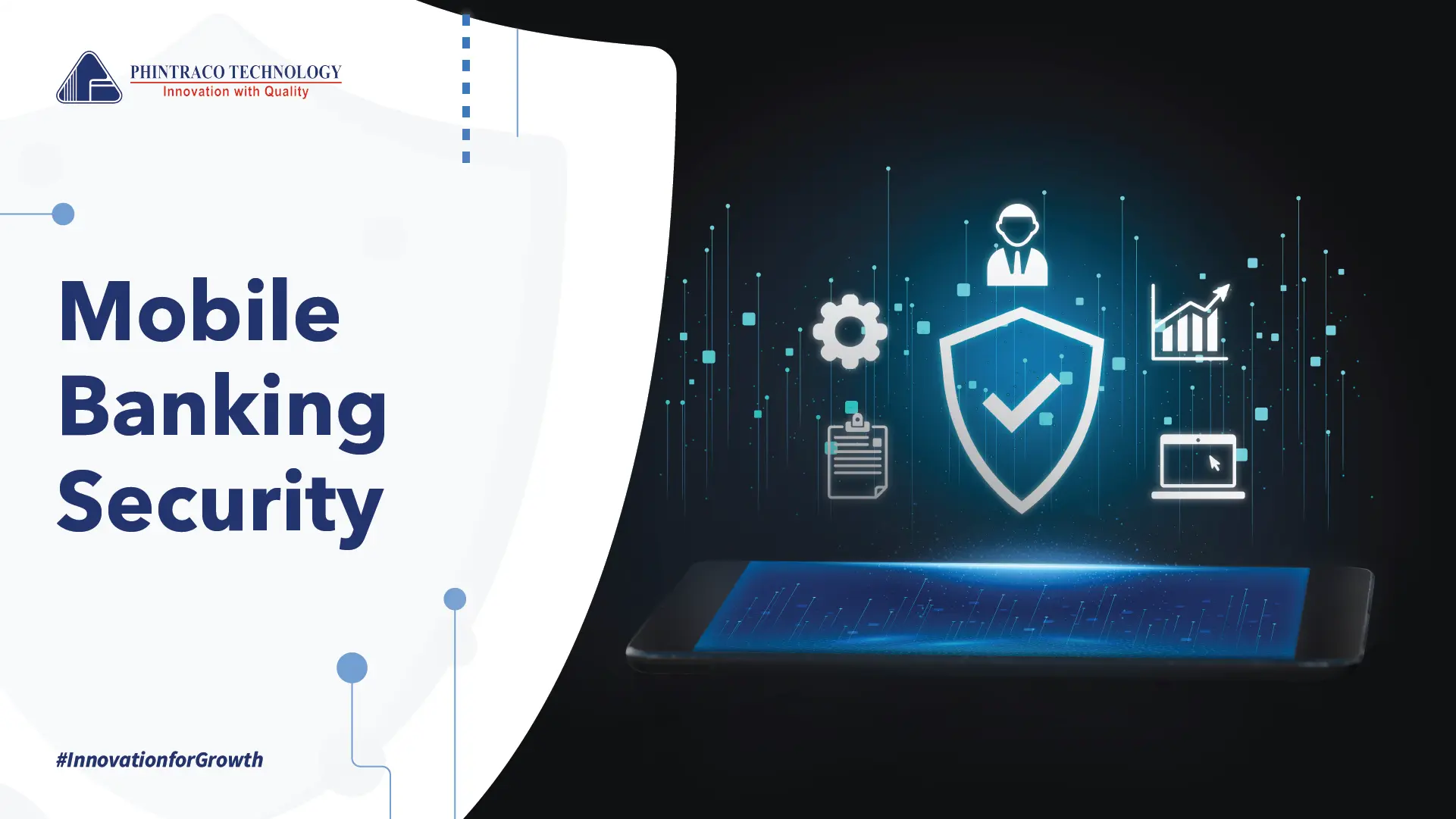Pentingnya Mobile Banking Security di Era Digital

Pentingnya Mobile Banking Security di Era Digital
Transaksi perbankan dengan menggunakan ponsel semakin digemari masyarakat semenjak pandemi berlangsung, terlebih lagi karena akses untuk keluar rumah sempat dibatasi oleh pemerintah. Namun, kejahatan siber pun juga ikut meningkat seiring dengan melonjaknya transaksi online. Maka dari itu, bank dan lembaga keuangan lainnya perlu menyediakan mobile app security yang optimal untuk memastikan perjalanan mobile banking nasabah berjalan dengan mulus
Artikel ini akan membahas pengertian, jenis-jenis, dan berbagai informasi terkait mobile banking security.
Apa itu Mobile Banking Security?
Mobile banking security adalah berbagai upaya dan teknologi pengamanan aplikasi perbankan yang dipakai user. Sebagian besar aplikasi perbankan menggunakan two factor authentication, yaitu verifikasi transaksi yang mereka hasilkan. Dalam setiap transaksi, SMS berisi OTP (One Time Password) dikirim ke pengguna, yang kemudian harus dimasukkan dan mengkonfirmasi bahwa transaksi sudah selesai. Agar semua informasi pengguna terlindungi dari serangan malware, data pengguna dienkripsi dan dikirimkan melalui saluran perbankan dengan keamanan tinggi.
Mengapa Industri Banking Rentan Terhadap Cyber Attack?
Dalam beberapa tahun terakhir, terjadi evolusi dalam mobile banking karena menawarkan layanan lebih banyak, termasuk transaksi yang memiliki risiko tinggi seperti transaksi keuangan. Karena kenyamanan dan kemudahan yang diberikan, pelanggan mulai tertarik untuk menggunakan aplikasi mobile banking. Alhasil, terdapat peningkatan minat pelanggan terhadap layanan perbankan digital. Tetapi, hal ini juga berarti perangkat mobile rentan terhadap serangan siber karena aplikasi mobile banking seringkali diinstal di perangkat pelanggan bersama puluhan aplikasi lainnya. Maka dari itu, status keamanan dari setiap perangkat mobile pelanggan akan berbeda, fluktuatif, dan dapat berubah kapan saja.
Apa Saja Jenis-jenis Cyber Attack Banking?
Serangan siber di sektor perbankan semakin merajalela dan tidak pernah berhenti. Oleh karena itu, lembaga perbankan harus memperhatikan mobile app cybersecurity untuk kenyamanan pelanggan. Berikut adalah beberapa jenis cyber attack yang umum terjadi di industri perbankan yang perlu Anda ketahui:
Emulator Attacks
Salah satu online banking cyber attack paling utama ini memungkinkan pelaku menyusup ke perangkat pelanggan dengan virus atau software berbahaya untuk mencuri data dan kata sandi. Serangan siber akan mengirimkan informasi ini ke emulator, mensimulasikan pengguna otentik dan mengotomatisasi interaksi normal dengan aplikasi. Hal ini memungkinkan pelaku untuk mendapatkan kode otorisasi dari SMS dan mendapatkan persetujuan transaksi pada rekening pelanggan.
Jailbreak
Jailbreak merupakan proses mengeksploitasi kelemahan perangkat elektronik yang dikunci untuk menginstal software selain yang telah disediakan oleh manufaktur untuk perangkat tersebut. Serangan ini bertujuan untuk mengambil alih perangkat yang telah di-jailbreak dan mengambil keuntungan dari kerentanan keamanan yang ada, dan memungkinkan penjahat siber untuk mendapatkan akses yang tidak sah ke sistem.
Keylogger
Keylogging adalah jenis serangan siber yang merekam semua yang Anda ketik di komputer, laptop, atau mobile keyboard. Serangan ini digunakan untuk memantau aktivitas pengguna secara diam-diam saat mereka menggunakan perangkat mereka, dan dilakukan oleh penyerang dengan mengembangkan software atau aplikasi bernama keylogger. Jika software keylogger berhasil diaktifkan di perangkat pengguna, penyerang akan memiliki akses ke semua aktivitas pengguna.
Injection
Injection merupakan upaya penyerang untuk mengirim data ke aplikasi dengan cara yang mengubah arti perintah yang kemudian dikirim ke penerjemah. Penyerang memasukan atau meninjeksi kode berbahaya ke dalam aplikasi atau sistem yang keamanannya rentan. Serangan ini memanfaatkan kerentanan keamanan pada input data yang diterima oleh aplikasi, kemudian dieksploitasi untuk menyisipkan kode atau perintah yang tidak sah.
Bagaimana Cara Mengamankan Mobile Banking?
Sebelum memberikan layanan perbankan digital pada nasabah, bank dan lembaga keuangan lainnya harus memikirkan kualitas pengalaman digital yang akan diberikan. Oleh karena itu, untuk mengefektifkan pengembangan layanan digital yang sedang berlangsung, bank perlu menjadikan pengalaman perbankan yang aman sebagai salah satu manfaat utama yang ditawarkan kepada nasabah. Simak tips mobile banking security di bawah ini untuk membantu mengamankan transaksi online!
Tingkatkan Autentikasi Pelanggan
Perusahaan perlu menerapkan proses autentikasi yang lebih kuat untuk transaksi pelanggan guna melindungi, meningkatkan keamanan transaksi, dan menghindar dari cyberattack yang menyerang banks. Proses verifikasi identitas nasabah perbankan secara menyeluruh merupakan autentikasi nasabah yang kuat. Untuk itu, pelanggan harus menggunakan dua atau tiga metode autentikasi untuk menunjukkan bahwa mereka adalah pemegang kartu yang sah.
Memperhatikan Risiko Layanan Perbankan Digital
Melakukan penilaian secara berkala dan komprehensif terhadap risiko yang dihadapi dapat meminimalisir kemungkinan terjadinya fraud atau kejahatan siber lainnya. Dalam menyediakan layanan perbankan digital bagi nasabah, memperhatikan sisi keamanan perlu menjadi fokus utama setiap perusahaan perbankan.
Menggunakan Autentikasi Kontekstual dan Analisis Perilaku
Dalam rangka meningkatkan keamanan mobile banking, perusahaan perlu menyesuaikan persyaratan keamanan berdasarkan kombinasi faktor kontekstual dan perilaku. Dengan demikian, memungkinkan sistem keamanan menentukan penilaian risiko individu untuk setiap interaksi. Administrator dapat memberikan pengguna mobile banking akses ke aplikasi dan layanan yang telah ditentukan sebelumnya.
Mengaktifkan End-to-end Encryption
Perusahaan harus menerapkan metode enkripsi untuk memperhatikan privasi dan keamanan pelanggannya. Enkripsi end-to-end dapat mengamankan pesan teks, gambar, suara, dan video sehingga hanya penerima yang dituju yang dapat melihatnya. Enkripsi ini menandakan bahwa semua pesan pelanggan dilindungi dan hanya dapat diakses oleh penerima.
Menerapkan Pendekatan Omnichannel
Tantangan umum bagi pelanggan adalah saat channel yang berbeda seringkali memerlukan cara yang berbeda juga untuk membuktikan identitas mereka dan mengotorisasi operasi, sehingga pelanggan tidak mengalami proses identifikasi yang cepat. Oleh karena itu, bank atau lembaga keuangan lainnya harus menerapkan pendekatan omnichannel dalam layanan digital mereka untuk mengoptimalkan keamanan tanpa memengaruhi kegunaan dan menghindari pelanggan dari proses autentikasi berulang saat mereka berpindah dari satu interaksi ke interaksi lainnya.
Tingkatkan Keamanan Mobile Banking Menggunakan App Shielding
Sehubungan dengan keamanan aplikasi mobile banking pada perangkat berisiko tinggi, perbankan dan lembaga keuangan lainnya dapat mengimplementasikan Application Shielding sebagai solusi keamanan aplikasi mobile banking. Penerapan App Shielding dapat membantu lembaga perbankan terhindar dari serangan siber sekaligus meningkatkan kepuasan dan kepercayaan nasabah. Teknologi ini mengidentifikasi risiko pada setiap transaksi mobile banking, sekaligus memastikan fungsi mobile banking bekerja dengan cepat dan aman pada perangkat yang berisiko tinggi.
Meningkatkan Perlindungan
Dengan mengimplementasikan solusi App Shielding, bank dan lembaga perbankan lainnya dapat menjamin bahwa aplikasi mobile banking aman dari segala jenis serangan siber. Solusi ini membantu memperkuat ketahanan aplikasi terhadap intrusi, tampering, reverse-engineering, dan malware.
Meningkatkan Pengalaman Pelanggan
App Shielding membantu bank untuk meningkatkan pengalaman nasabah, karena semua interaksi dan transaksi nasabah di mobile banking terlindungi dari risiko serangan siber yang semakin canggih. Solusi ini memungkinkan bank melayani lebih banyak pelanggan, bahkan pada perangkat yang di-jailbreak atau di-rooting, tentunya sambil mengurangi risiko yang lebih berbahaya.
Keamanan yang Dapat Diskalakan
Bank dan lembaga keuangan lainnya dapat melindungi aplikasi mobile banking mereka dari ancaman terbaru tanpa menghambat frekuensi atau kecepatan perkembangan aplikasi. Dengan solusi App Shielding, perkuat aplikasi Anda dari ancaman seluler terbaru tanpa menghambat frekuensi atau kecepatan penerapan.
Phintraco Technology adalah sebuah perusahaan yang bergerak dalam bidang solusi dan layanan ICT dibawah naungan Phintraco Group. Sebagai mitra produk IT yang terkemuka, Phintraco Technology berspesialisasi dalam menyediakan layanan teknologi informasi dan komunikasi yang handal. Salah satu solusi yang kami tawarkan adalah solusi soft token yang membantu meningkatkan keamanan saat melakukan transaksi perbankan digital.
Apabila Anda perlu informasi lebih detail terkait solusi soft token, hubungi marketing@phintraco.com.
